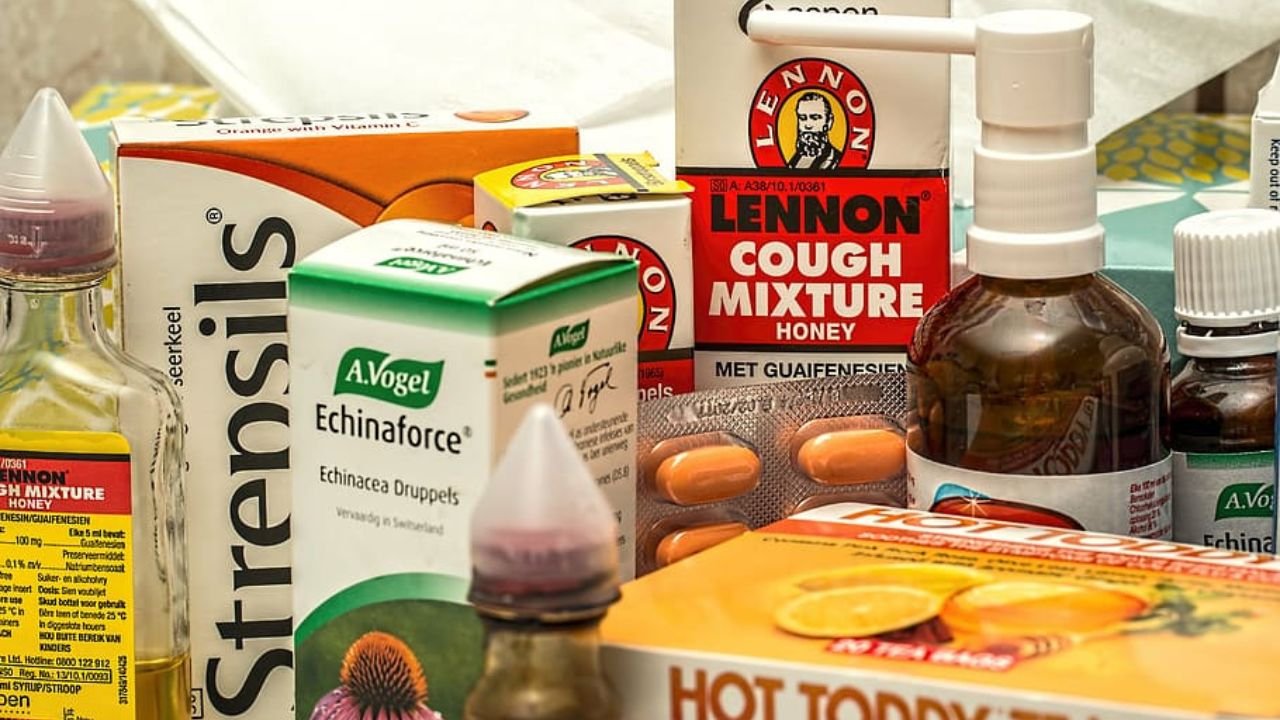Can You Bring Cough Syrup On A Plane? Traveling with a cough can be uncomfortable enough without the added stress of navigating airport security.
Whether you’re headed on a business trip, vacation, or family visit, it’s essential to ensure that your necessary medications, including cough syrup, make it through the security checkpoint without any hassle.
If you’re wondering whether you can bring cough syrup on a plane, the answer is yes—but with specific guidelines to ensure a smooth journey.
This comprehensive guide will walk you through the essentials of traveling with cough syrup, including TSA regulations, tips for packing, and answers to frequently asked questions.
Contents
- 1 Understanding TSA’s 3-1-1 Liquids Rule
- 2 Medically Necessary Liquids: What You Need to Know
- 3 Tips for Packing Cough Syrup for Your Flight
- 4 International Travel Considerations
- 5 Alternatives to Liquid Cough Syrup
- 6 Frequently Asked Questions (FAQs)
- 6.1 1. Can I bring over-the-counter cough syrup on a plane?
- 6.2 2. Do I need a prescription for cough syrup to bring it on a plane?
- 6.3 3. Can I bring cough syrup in my checked luggage?
- 6.4 4. What if my cough syrup exceeds 3.4 ounces?
- 6.5 5. Are there any special considerations for traveling internationally with cough syrup?
- 7 Final Thoughts: Can You Bring Cough Syrup On A Plane?
Understanding TSA’s 3-1-1 Liquids Rule
When it comes to traveling with any liquids, including cough syrup, it’s essential to understand the Transportation Security Administration (TSA) rules. The TSA enforces the 3-1-1 rule for liquids in carry-on luggage, which applies to all items in liquid, gel, or aerosol form. The rule states:
- 3.4 ounces (100 milliliters) or less per container
- 1 quart-sized, clear, resealable plastic bag
- 1 bag per passenger
In simple terms, this means you can only carry liquids in containers of 3.4 ounces (or 100 milliliters) or smaller, and all these containers must fit into a single, clear, resealable plastic bag. If you’re traveling with a larger bottle of cough syrup, such as a 6-ounce bottle, you’ll have to place it in your checked luggage. However, the good news is that there are some exceptions to this rule that might benefit you.
Medically Necessary Liquids: What You Need to Know
The TSA does allow exemptions for medically necessary liquids, which include prescription medications, over-the-counter medications, and even some vitamins. Cough syrup often falls under this category, especially if you have a doctor’s prescription or a medical reason for needing it during the flight.
Here’s the key thing to know: medically necessary liquids, including cough syrup, are not subject to the 3-1-1 rule. This means that if you have a prescription for cough syrup, or if you’re carrying it for a medical need (such as a severe cold or flu), you are allowed to bring a larger amount in your carry-on bag. However, it still must go through additional screening at the airport.
The TSA website provides a helpful guideline:
“You may bring medically necessary liquids, medications, and creams in excess of 3.4 ounces or 100 milliliters in your carry-on bag. Remove them from your carry-on bag to be screened separately from the rest of your belongings.” (tsa.gov)
This means you should expect your cough syrup to undergo extra inspection, and you should declare it to the TSA officer before you go through security.
Tips for Packing Cough Syrup for Your Flight
Traveling with liquid medications such as cough syrup doesn’t have to be a stressful experience if you plan ahead. Here are some essential tips to ensure your cough syrup gets through airport security with ease:
1. Keep it in its original packaging
Always leave the cough syrup in its original packaging, especially if it’s prescription medication. The packaging often includes important information, such as the name of the medication, the dosage, and your doctor’s instructions, which can help TSA agents quickly identify the contents. Additionally, if you’re carrying prescription cough syrup, the packaging may include the prescription label, which can expedite the screening process.
2. Declare your medication
When you approach the TSA checkpoint, inform the TSA officer that you’re carrying cough syrup or other liquid medications. This will allow them to separate it from your other belongings and conduct a more efficient inspection. While it’s not always necessary to have a doctor’s letter for over-the-counter cough syrup, it’s a good idea to carry documentation for prescription cough syrup to avoid delays.
3. Consider transferring the right amount into smaller containers
If you only need to bring a small amount of cough syrup for your flight (for example, a few doses), you might consider transferring it into smaller travel-sized containers. As long as each container is 3.4 ounces or less, you can comply with the 3-1-1 rule, avoiding the need for special exceptions at security. Just be sure to place the containers in a resealable plastic bag with other liquids, if applicable.
4. Use clear resealable plastic bags
The TSA requires liquids to be placed in clear, resealable plastic bags. Make sure your cough syrup is inside one of these bags and separate it from other items in your carry-on. This ensures TSA officers can quickly scan and verify the contents of your bag without unnecessary delays. The bag should be no larger than one quart in size.
5. Keep medication easily accessible
When traveling with medication, make sure it’s easily accessible in your carry-on bag. Having it ready to be removed for inspection speeds up the security process. You don’t want to be fumbling through your bag in a hurry while others wait behind you.
International Travel Considerations
If you’re planning to travel internationally, it’s important to keep in mind that other countries may have different rules about bringing medication into the country. The regulations around the importation of cough syrup and other liquids vary widely from one destination to another. Some medications that are commonly available over-the-counter in the United States might be considered controlled substances in other countries.
Here’s what you need to do before traveling internationally with cough syrup:
- Research the regulations of your destination country
Some countries, such as Japan and the United Arab Emirates, have very strict regulations regarding the importation of medications. Some common ingredients found in cough syrups, such as codeine, might be illegal in these countries. Before your trip, visit the embassy or consulate of your destination country to verify whether your cough syrup will be allowed into the country.
- Obtain a doctor’s letter
If you’re carrying prescription cough syrup, it’s highly advisable to obtain a doctor’s letter stating that the medication is required for your health. Some countries may even ask for a letter if you’re carrying any over-the-counter medication. A letter from your doctor can help prevent misunderstandings or delays during your journey.
- Check for controlled substances
Certain cough syrups that contain codeine, for example, are classified as controlled substances in other countries. Even if you have a prescription for the medication, it may be subject to additional scrutiny or could be confiscated at the border. Always check the regulations and ensure that your cough syrup does not contain ingredients that are banned or restricted in the countries you’re visiting.
Alternatives to Liquid Cough Syrup
If you prefer to avoid carrying liquid cough syrup altogether, there are a few alternatives you might consider, especially if you’re looking for a hassle-free travel experience.
- Pills or Tablets
Cough syrup is effective, but it’s not the only option. If you’re traveling with a cold or flu and need relief, you can opt for cough medicine in pill or tablet form. These forms of medication are not subject to the TSA’s liquid restrictions, making them easier to carry on your flight.
- Cough Lozenges
For mild coughs, cough lozenges are another alternative to liquid cough syrup. They can provide relief without the need for liquids, which makes them convenient for travel. Plus, they’re generally small and easy to carry, even in your pocket or purse.
See Also: Can You Bring Sweet Corn On A Plane?
Frequently Asked Questions (FAQs)
1. Can I bring over-the-counter cough syrup on a plane?
Yes, you can bring over-the-counter cough syrup in your carry-on, provided it complies with TSA’s 3-1-1 rule. If it’s medically necessary, you may bring larger quantities, but you must declare it at the security checkpoint.
2. Do I need a prescription for cough syrup to bring it on a plane?
A prescription is not required for over-the-counter cough syrup. However, if you’re carrying prescription cough syrup, it’s advisable to have the prescription label or a doctor’s note to facilitate the screening process.
3. Can I bring cough syrup in my checked luggage?
Yes, you can pack cough syrup in your checked luggage without the 3-1-1 restrictions. However, it’s recommended to keep it in your carry-on to have access during the flight.
4. What if my cough syrup exceeds 3.4 ounces?
If your cough syrup exceeds 3.4 ounces and is not medically necessary, it must be placed in your checked luggage. Medically necessary liquids in larger quantities are allowed in carry-on bags but must be declared at the checkpoint.
5. Are there any special considerations for traveling internationally with cough syrup?
Yes, some countries have strict regulations regarding the importation of medications. It’s essential to research the laws of your destination country and carry appropriate documentation, such as a doctor’s letter or prescription.
Final Thoughts: Can You Bring Cough Syrup On A Plane?
Traveling with a cough doesn’t have to be a complicated process. By understanding TSA regulations, properly packing your cough syrup, and being prepared for international travel considerations, you can ensure a smooth journey.
Always plan ahead, keep necessary documentation handy, and consult with relevant authorities when traveling internationally. Safe travels!

Hello, I’m Janiyah Gibbs—a retired flight crew member and former TSA officer from Alaska, USA. At PlaneCarry.com, I share expert insights on what to carry (and avoid) when flying.

